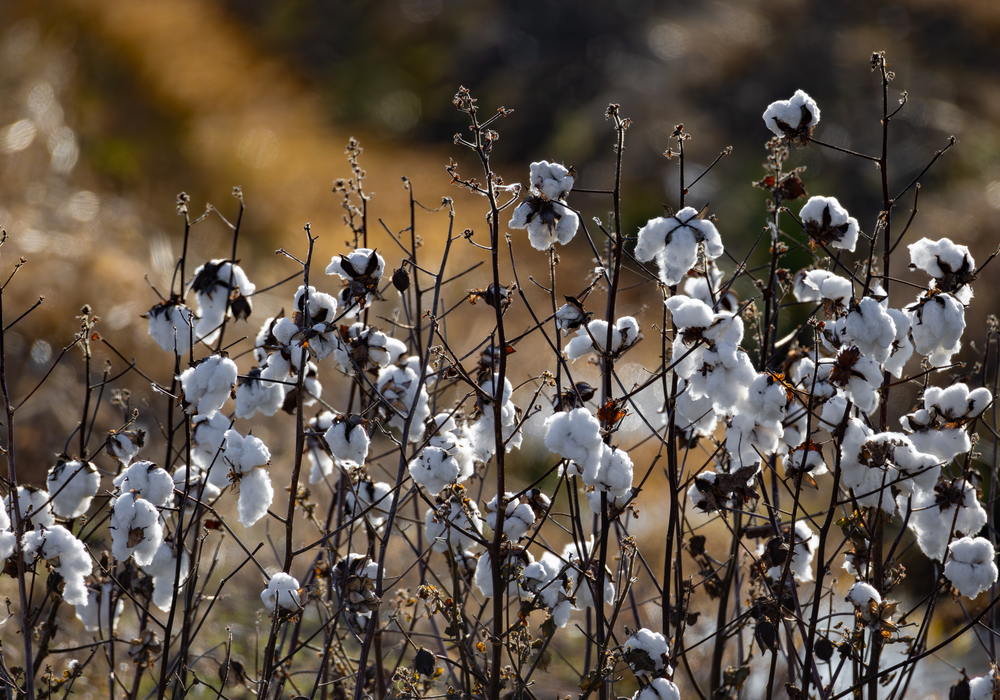Cotton is at a crossroads.
That’s the conclusion from Solidaridad’s 2025 Cotton Ranking, a comprehensive ranking of cotton consumption across 100 brands made in partnership with Good On You.
The ranking has evolved into a three-part ranking intended to provide a greater understanding on the complex reality of sustainable cotton fashion. The first ranking tracks the amount of certified cotton in each major brand’s material mix. The second looks at the total cotton purchased by the major brands and groups, providing insight into which companies dominate cotton purchasing, and therefore have the most potential to impact the supply chain.
In the third ranking, the responsible supply chain network looked at cotton versus synthetics, comparing how each brand balances its use of farm grown cotton with fossil-based fibers.
The latter reveals the fashion industry’s rising dependence on unsustainable synthetic materials. In general, “limited progress” has been made on sustainability and reducing the apparel industry’s reliance on synthetic fibers since the platform’s last rankings in 2023.
Solidaridad reports that the level of certification across the top 100 has seen only modest gains. According to the report, 31 of the 100 companies ranked use 50 percent cotton or more in their operations, and of these, just 17 of them claim that more than 50 percent of their cotton is certified. Twenty-six brands use more than 50 percent synthetic fibers, with the remaining 44 brands using a wider mix of natural and synthetic fibers.
Additionally, access to reliable information continues to be a roadblock for comprehensive analysis. Solidaridad reports just 35 out of 100 companies provide detailed information on the breakdowns of their cotton certifications, and only 29 disclosed the total amount of cotton in their supply chain.
“Bad data and poor purchasing practices are slowing down the move towards sustainable cotton in the fashion industry, while the potential for sustainable cotton is being undermined by major brands’ rising dependence on synthetic fibers. Change is possible, but brands need to act now: invest in proper data management and transparency, choose natural solutions over synthetic, and support farming communities at the heart of the cotton supply chain,” Solidaridad states.
Room for improvement
Unsurprisingly, cotton remains a large part of denim brands’ total fiber consumption. Levi’s, G-Star and Ralph Lauren ranked the top three brands in total cotton versus total synthetics. They are also the only brands with more than 80 percent cotton in their operations.
Better Cotton (or equivalent) and organic were G-Star’s most used types of cotton. Better Cotton was also largely used by American Eagle, Mango, OVS and Carter’s. While Levi’s reported that 96 percent of its cotton from certified sources, the brand did not provide a breakdown.
Solidaridad notes that data can be misleading. Some companies report the highest percentage of certified cotton in their supply chain, but cotton accounts for a small portion of their overall fiber mix. This is especially true for activewear brands that use high amounts of synthetics. For example, Adidas claims to use 100 percent certified cotton, while cotton makes up 12 percent of their estimated material mix. Puma reports 99 percent certified cotton but the fiber makes up just 10 percent of the company’s total fiber usage.
Solidaridad expressed concerns that the role of synthetics may grow in the coming years in an ongoing effort to cut prices further. “Unfortunately, many of the companies most reliant on synthetics are major industry players. Fast fashion giant Shein is now bigger than both H&M and Zara in terms of market share, and is heavily reliant on synthetic fibers, accounting for 82 percent of fibers used,” the report states.
The most positive finding Solidaridad reported is that 25 brands have reported certified recycled cotton in their supplies, “highlighting a small but notable trend toward circularity in cotton sourcing.”
The caveat is that the amount of recycled cotton remains negligible Fourteen brands—including G-Star, Disel, Amazon, C&A and others—include 1 to 4 percent of recycled cotton in their operations. Another 10 brands (Inditex Group, Zalando, Cotton On, H&M Group and others) use between 10 to 18 percent recycled cotton. Patagonia uses the most recycled cotton with 27 percent.


